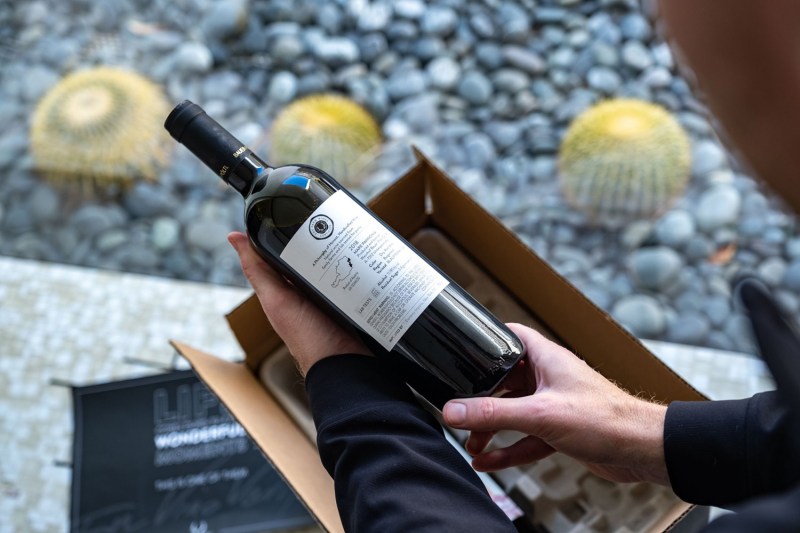With parties and dinners on the horizon, we need to start thinking about how to make healthier choices this season. Winter and the holidays go hand in hand with the consumption of red wine. We’re here to enlighten you on how to make health-conscious decisions about the wine you choose to drink.
Red Wine Health Benefits

Red wine has long been thought of as a heart healthy drink…as long as it’s consumed in moderation. According to the Mayo Clinic, the antioxidants which are found in red wine may help prevent coronary artery disease, the condition that leads to heart attacks. Antioxidants in red wine may help protect the lining of blood vessels in your heart. Doctors believe part of the benefit might be that the antioxidants in red wine may increase the level of “good” cholesterol and protect against cholesterol buildup which leads to blockages.
Let’s educate ourselves on the plant-based, healthy compounds a glass of red wine contains:
- Antioxidants – Balance or counteract free radicals.
- Flavonoids – The largest type of antioxidants developed from the seeds and skins of grapes and found in red wines.
- Polyphenols – Inflammation reducing compounds. Resveratrol is part of this group of compounds.
Resveratrol in red wine comes from the skin of grapes and because red wine is fermented with grape skins for longer than white wine, red wine contains more resveratrol. Alternatively, red and purple grape juices have the same benefits of red wine.
Scientific terminology aside, balance is always key when it comes to red wine (and alcohol in general). When consumed in moderation, red wine can present cardiovascular and anti-inflammatory benefits. When consuming a few servings of red wine daily over an extended amount of time though, health problems, poor sleep, hypertension, liver damage, and difficulties with your pancreas can arise.
How to Approach Wine During the Holidays

If you lead a healthy lifestyle (we highly recommend trying to!), it can be confusing to determine the right approach to wine. With that being said, some wines are healthier than others. Did you know that the FDA does not regulate alcoholic beverages and winemakers are not required to create ingredient labels; therefore, you could be drinking wine that has over 50 different additives? By additives we mean stuff like fish bladders and gelatin. Not sure about you, but we are having second thoughts about drinking wine at the next function.
This holiday season we are resorting to natural wines. Organic is usually what comes to mind when we hear natural in front of a product, but natural wines are so much more than that. The very minimum requirements for a wine to be labeled as a natural wine is that it undergoes a native-yeast fermentation process and has no additives other than nominal sulfuring.
Dry Farm Wines, Naturally Grown and Made

Enter Dry Farm Wines, a health-focused, low-alcohol, natural wine club, curating high quality, clean, no sugar, healthy wines. Each wine has no additives and is friendly to every diet, including Paleo, low-carb, and Ketogenic. They’re doing things differently.
The company was founded in 2015 and sources wines from small sustainable organic farms across Europe and South Africa. Unlike most commercialized and processed wines, these are wines that are naturally grown and naturally made. We’ll put it this way; they make wine from the same fruits they’d give to their children.
Natural is only a sliver of their criteria. Dry Farm Wines are organically farmed on healthy soils and are always fermented with wild native yeast. Even the company’s name signifies it’s healthy because Dry Farm Wines only rely on rainfall (no extra irrigation) which preserves the antioxidant content in the grapes. With less than 1 gram of sugars and carbs in wine, it’s a much healthier wine option. They take pride in lab testing to select and verify the purity of their products.
Natural wines are not for everyone, but they’re definitely for those who care about what enters their bodies, who don’t want groggy days, and who want better all-around performance.
But, don’t start over-indulging in natural red wine for its heart benefits. Too much red wine and alcohol in general can have harmful effects on your body. For healthy adults, men ages 65 and younger should have up to two drinks of red wine a day while men older than 65 should have up to one drink a day. A drink is defined as 5 ounces of wine. Cheers to healthy wine drinking this holiday season.


